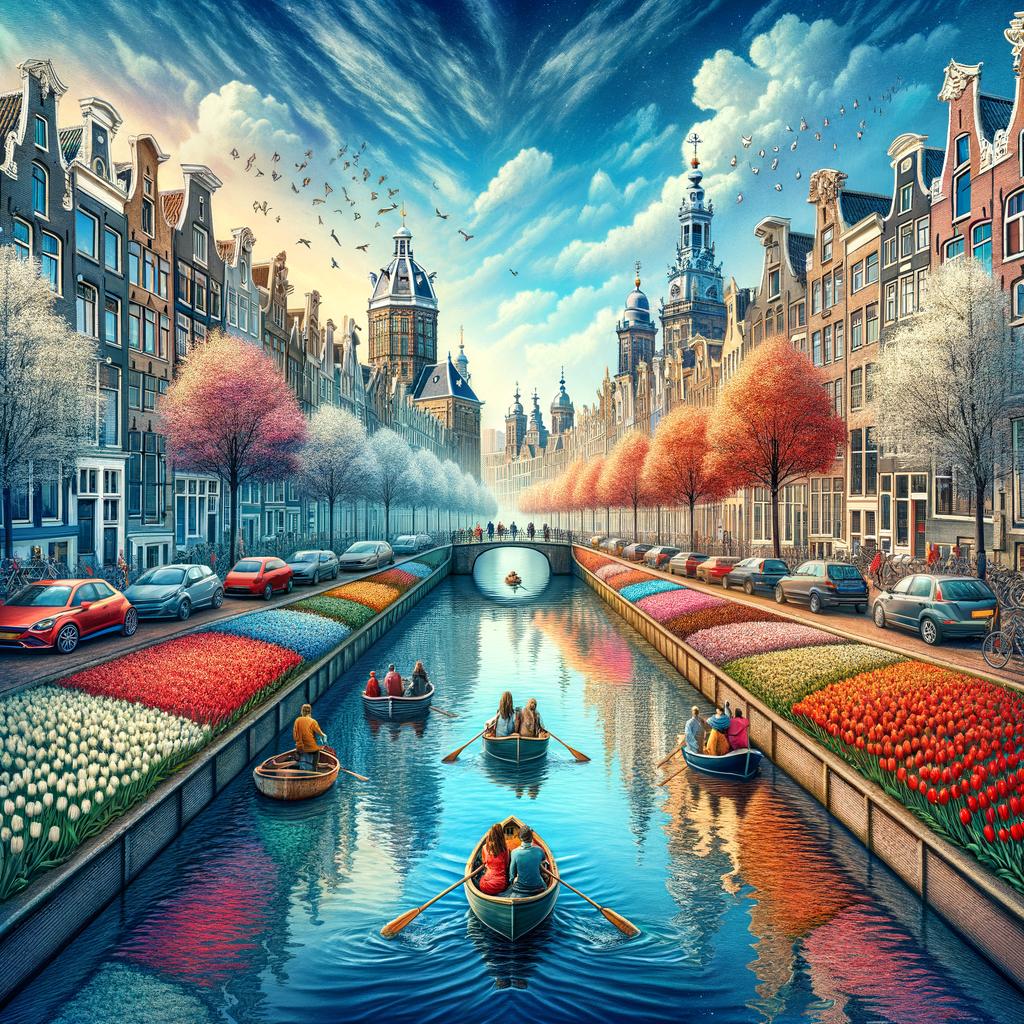
Introduction – Tracing the Canals of Amsterdam
Ever found yourself immersed in the picturesque postcard perfection of Amsterdam and wondered, “Why are there canals in Amsterdam?” If so, you’re not alone. This intriguing inquiry has piqued the curiosity of countless visitors to the Venice of the North. Initially, these waterways were constructed for the pragmatic purposes of water management, defense, and transport. However, as you journey through this article, you’ll discover the deeper story behind these serpentine channels, much like the depth of the canals themselves. We’ll delve into their historical significance, architectural marvel, and enduring charm in Amsterdam’s cityscape.
The Origination of Amsterdam’s Canal Ring
Brace yourself for a trip back in time as we explore why Amsterdam’s canals came into existence. Born from the murmurings of the medieval age, their construction posed as a practical solution to the growing population and bustling trade. The creation of the canal system was, in essence, a masterful feat of city planning that intertwined necessity and ingenuity.
A Living Testament to Golden Age Grandeur
Unraveled like a spool of emerald ribbon, the concentric arcs of Amsterdam’s canals are more than mere bodies of water. These canals are shimmering mirrors reflecting the city’s Golden Age grandeur, and each bridge crossed, each quaint house passed, tells a new tale.
Amstel’s Architectural Accents
Amsterdam’s canals are more than just functional. They are an intricate part of the city’s aesthetic allure, touted as a unique display of architectural brilliance. Lining the canals, the cityscape is studded with buildings exhibiting styles from different periods, each a testament to Amsterdam’s rich artistic tilt.
Transport and Trade in times past
The canals were the city’s lifelines in the days of yore, integral to trade and transport. Barges, brimming with goods, glided gracefully under countless bridges, painting a tableau vivant of Amsterdam’s bustling commercial past.
Canal culture as Tourist magnet
Nowadays, Amsterdam’s canals are deeply woven into its tourist fabric. From canal cruises to canal-side cafes, from idyllic houseboats to charming drawbridges, waterway-inspired experiences abound. These liquid lanes wend their way around the city, whispering the secrets of Amsterdam’s allure to anyone willing to listen.
Preserving history yet Sanitizing stigma
Canals are the city’s nod to preservation, clinging steadfastly to history. Simultaneously, they sanitize the stigma of Amsterdam being a soggy city, transforming a geographical challenge into an irresistible charm.
Serpentine Symbolism
Amsterdam’s canals are symbolic, too. Picture an ever-changing impressionist painting, where each brushstroke is another boat, each ripple a new light. In essence, the canals are moving monuments, a fluid feature teeming with life and mirroring the city’s vibrancy.
A watery monument to Amsterdam’s charm
From their purpose as practical pathways to a place among UNESCO World Heritage sites, these aquatic arteries have a rich narrative to share. Consider it an invitation to not just admire the beauty of Amsterdam’s canals but appreciate the backstory they so gracefully carry.
Conclusion – Amsterdam’s Lifeline and Legacy
The canals of Amsterdam are irrefutable proof that where there’s a will, there’s a waterway. By transforming geographical constraints into captivating canals, they’ve molded Amsterdam into a city unlike any other. They humbly celebrate the city’s historic grandeur while presenting a siren’s song to travelers worldwide. So, to the question, “Why are there canals in Amsterdam?” we say it’s simply because Amsterdam wouldn’t be Amsterdam without them.
Frequently Asked Questions
1. Why are the houses along Amsterdam’s canals so narrow?
The houses along Amsterdam’s canals are narrow due to historical tax implications. Buildings were taxed on their canal-front width, so houses were designed narrowly to minimize this tax.
2. What’s the best way to explore Amsterdam’s canals?
One of the best ways to explore Amsterdam’s canals is by a canal cruise. It’s a relaxing way to see the city’s architecture, bridges, and houseboats.
3. How many canals does Amsterdam have?
Amsterdam has about 165 canals, covering a length of over 100 kilometers.
4. Why are the buildings along the canals leaning forward?
The buildings along the canals seem to lean forward due to a design feature that assisted in hoisting goods up with a pulley system. The forward lean prevents the goods from hitting the building’s facade.
5. Are the canals in Amsterdam clean?
Yes, the canals in Amsterdam are routinely cleaned. However, swimming in them is typically not recommended except for certain sections during special events.


